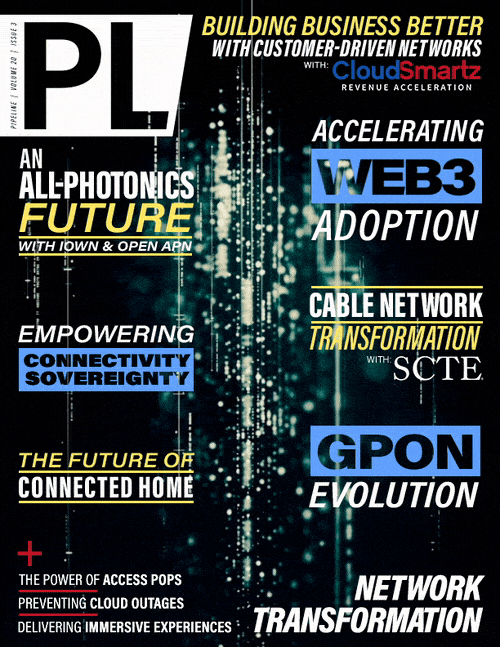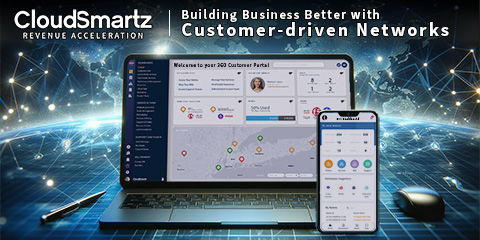Building Business Better with
Customer-driven Networks
By: Manjeet Dhariwal, Dan Wagner

Service delivery today is virtually instant. You can place an order on Amazon with the click of a button and a drone delivers it to your doorstep in about an hour. Piping hot pizza in under 30 minutes. Groceries, same day. We no longer need to wait or go out shopping for virtually anything.
Today’s customers expect a seamless, real-time experience that they control. They know what they want, and they want it as close to now as possible. Customers gravitate toward a robust self-service experience and quickly abandon brands that can’t deliver. This heightened customer expectation has transformed industries that have adapted quickly, such as retail and e-commerce, and sent customers rushing to digitally native brands that never had to transform in the first place.
Why are networks services so starkly different?
The Death of the Dinosaurs
Before deregulation, telecom was just a utility. Akin to electricity, water, or garbage. Customers didn’t need to be kept happy – they simply had no choice. If they wanted service, there was just one service provider. This is the culture from which telecommunications was born.
For a couple decades after deregulation, network and communication service providers had something special, shiny, and unique: the network. Customers didn’t really know what it was or how it worked. Adding on enterprise data and subsequently wireless services kept customers sufficiently confused, and the customer experience (CX) amounted to nothing more than entrenching as deeply as you could to a few, large enterprise customers and making it as difficult as possible for them to leave. CX at the time was tantamount to a bad marriage, but then something happened. Network services became commoditized.
Web Links
- CloudSmartz Company Website
- CloudSmartz Video Showcase
-
Schedule an exploratory call with
CloudSmartz
About CloudSmartz
CloudSmartz delivers the industry’s leading digital marketplace and intelligent digital customer experience platform, Acumen360™ to accelerate revenue for Communications Service
Providers (CSPs). Acumen360 drives value creation and immediate financial improvements by unlocking customer software-centric automation – optimizing existing O/BSS investments.
CloudSmartz helps CSPs transform into digital-first service providers by optimizing business intelligence, digitizing operations, and generating revenue opportunities through a
unified service experience. Encompassing over a quarter-century of telecom and software-industry experience, CloudSmartz has been recognized by Inc. magazine as one of America’s
Fastest-Growing Privately-held Companies for five consecutive years. For more information, visit https://cloudsmartz.com, follow CloudSmartz on LinkedIn.
Suddenly, everyone had their own network with similar capabilities, and you no longer needed a network to deliver voice services. As for mobile services, you had your choice of providers, and Mobile Virtual Network Operators (MVNOs) were a dime a dozen. 3G, 4G, 5G – take your pick. But enterprise customers still needed expensive, on-premises PBX solutions, one might think. How else would they obtain all the fancy direct dial and toll-free numbers, extensions, and voicemail services? Enter virtual PBX. But they can’t take their phone number with them, right? Nobody wants to change their number. Wait, Telephone number portability. Video conferencing? There’s an app for that. T1 Lines? Enterprise wireless. The times were changing, and they were changing fast. Service providers were hanging on hard to network services with both hands and white knuckles as the end-all, be-all but failed to realize they were becoming relegated to commodity bit-pipe providers. At least it paired well with their legacy, utility culture. But then something else happened, customers got smarter.
Consumers of network services, particularly enterprise customers, developed a better understanding of the underlying network. They knew what they needed and began to demand more complex heterogenous network combinations encompassing cloud, wireless, and wireline services. In fact, many enterprises even began building their own radio-access and wide-area networks (RAN and WAN). Then they began to layer Software-Defined Networking and Artificial Intelligence (AI) over the top. This resulted in frustration and ultimately churn, as telecom customers looked for a better way to consume network services. Customers wanted it all, ideally from one provider, and were not willing to wait. Things only got worse during the pandemic, where CX



















